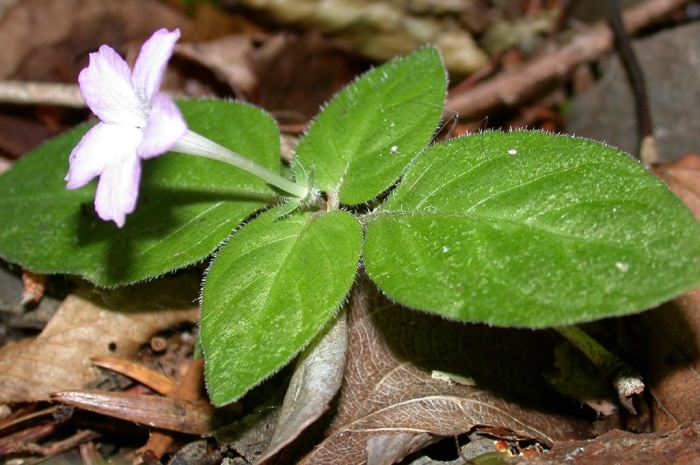Fourflower Yellow Loosestrife
(Pseudopyxis depressa)
Fourflower Yellow Loosestrife (Pseudopyxis depressa)
/
/

Keisotyo
CC BY-SA 4.0
Image By:
Keisotyo
Recorded By:
Copyright:
CC BY-SA 4.0
Copyright Notice:
Photo by: Keisotyo | License Type: CC BY-SA 4.0 | License URL: https://creativecommons.org/licenses/by-sa/3.0 | Uploader: Keisotyo | Publisher: Wikimedia Commons |





Estimated Native Range
Summary
Pseudopyxis depressa, commonly known as Fourflower Yellow Loosestrife, is an evergreen perennial herb native to the moist woodland edges and wetlands of Japan. It typically grows to a height of 1-3 feet (0.3-0.9 meters) and a width of 0.5-1 feet (0.2-0.3 meters). This plant features a clumping form with upright stems and lance-shaped leaves. The flowers are commonly yellow with occasional white blooms, appear in the spring and are quite showy, attracting pollinators such as bees and butterflies.
Fourflower Yellow Loosestrife is valued for its vibrant yellow flowers and its ability to thrive in moist, shady garden spots where other plants might struggle. It is often used in border plantings, woodland gardens, and as a ground cover. This species prefers consistently moist soil and part shade, though it can tolerate full sun in cooler climates if kept adequately watered. It is not particularly prone to diseases or pests, but it can suffer from root rot if drainage is poor. While it is not known to be invasive, gardeners should be mindful of its spreading habit and may need to control its growth in smaller spaces.CC BY-SA 4.0
Fourflower Yellow Loosestrife is valued for its vibrant yellow flowers and its ability to thrive in moist, shady garden spots where other plants might struggle. It is often used in border plantings, woodland gardens, and as a ground cover. This species prefers consistently moist soil and part shade, though it can tolerate full sun in cooler climates if kept adequately watered. It is not particularly prone to diseases or pests, but it can suffer from root rot if drainage is poor. While it is not known to be invasive, gardeners should be mindful of its spreading habit and may need to control its growth in smaller spaces.CC BY-SA 4.0
Plant Description
- Plant Type: Herb
- Height: 1-3 feet
- Width: 0.5-1 feet
- Growth Rate: Moderate
- Flower Color: Yellow
- Flowering Season: Spring
- Leaf Retention: Evergreen
Growth Requirements
- Sun: Part Shade
- Water: High
- Drainage: Slow, Medium
Common Uses
Bee Garden, Low Maintenance, Water Garden
Natural Habitat
Moist woodland edges and wetlands in Japan
Other Names
Common Names:
Scientific Names: , Pseudopyxis depressa, Pseudopyxis depressa var. variegata, Pseudopyxis depressa var. angustiloba, Pseudopyxis longituba, Pseudopyxis quadriflora,
GBIF Accepted Name: Pseudopyxis depressa Miq.